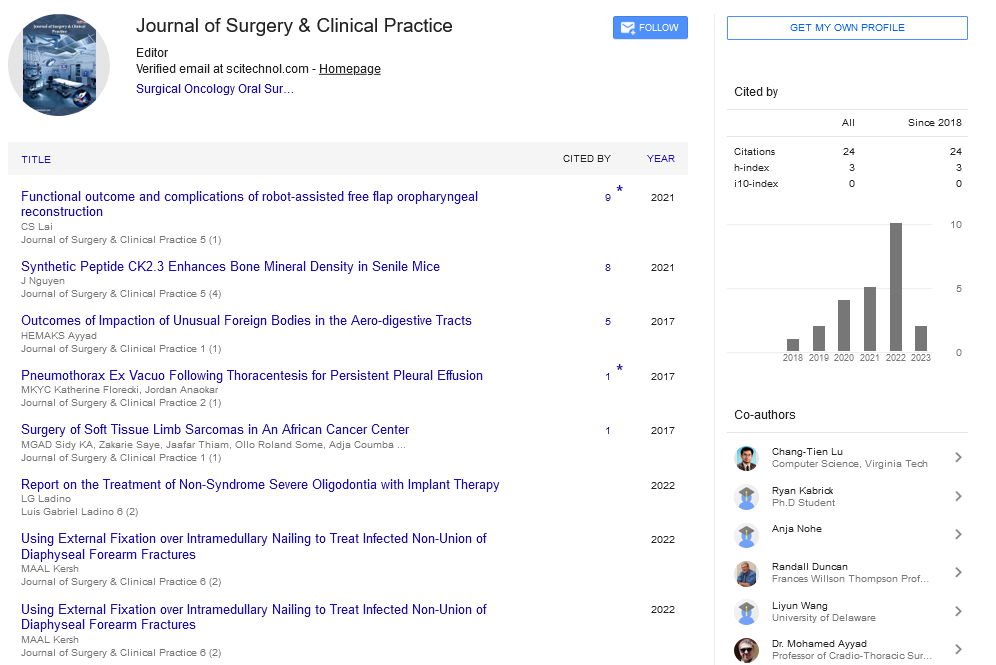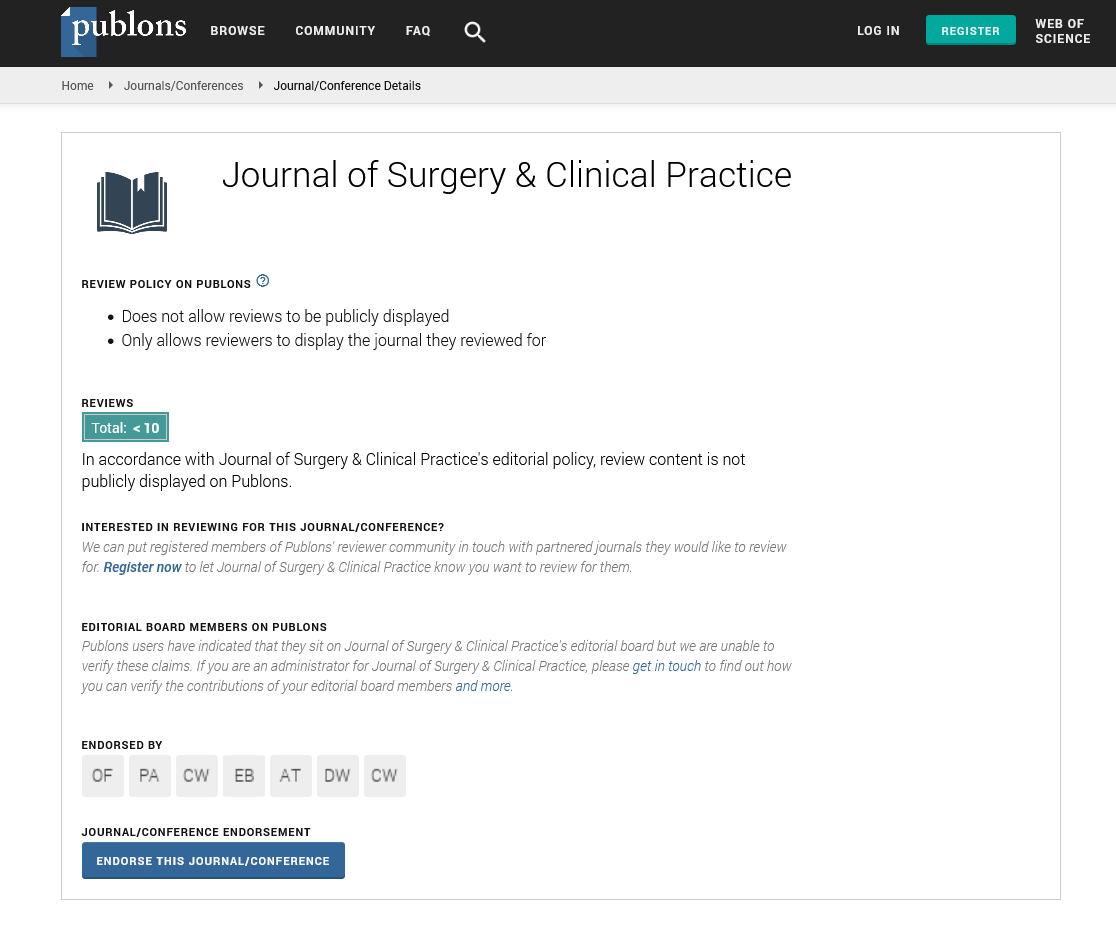Opinion Article, J Surg Clin Prac Vol: 7 Issue: 4
Safety and Efficacy in Minimal Access Surgery: Current Practices and Future Directions
Benhur Lee*
1Department of Surgery, Sydney Medical School, University of Sydney, Sydney, Australia
*Corresponding Author: Benhur Lee,
Department of Surgery, Sydney Medical
School, University of Sydney, Sydney, Australia
E-mail: benhu@surg.au
Received date: 22 November, 2023, Manuscript No. JSCP-24-125853;
Editor assigned date: 24 November, 2023, PreQC No. JSCP-24-125853 (PQ);
Reviewed date: 08 December, 2023, QC No. JSCP-24-125853;
Revised date: 15 December, 2023, Manuscript No JSCP-24-125853 (R);
Published date: 22 December, 2023, DOI: 10.35248/ JSCP.23.7.100395.
Citation: Lee B (2023) Safety and Efficacy in Minimal Access Surgery: Current Practices and Future Directions. J Surg Clin Prac 7:4.
Description
In the field of modern medicine, Minimal Access Surgery (MAS) stands as a testament to innovation, promising safer and more efficient alternatives to traditional open surgeries. Its evolution has been marked by a continuous quest for enhanced safety and efficacy. Minimal access surgery encompasses various techniques, including laparoscopy, robotic-assisted surgery, and endoscopy. These approaches offer smaller incisions, reduced blood loss, shorter hospital stays, and faster recovery times compared to open surgeries. Key to its safety and efficacy are advancements in imaging technology, instrument miniaturization, and surgeon training. High-definition cameras and precise instruments enable surgeons to perform intricate procedures with greater accuracy and minimal tissue damage.
Moreover, adherence to strict patient selection criteria ensures that individuals suitable for minimal access surgery receive optimal care. Preoperative assessments, including imaging studies and medical evaluations, help identify potential risks and ensure patient readiness. During surgery, meticulous attention to technique and patient monitoring further enhance safety and minimize complications. In terms of efficacy, minimal access surgery has demonstrated comparable or superior outcomes to traditional approaches across various medical specialties. From gastrointestinal surgeries to gynecological procedures, MAS offers reduced postoperative pain, faster recovery, and improved cosmetic results, leading to greater patient satisfaction. Despite its benefits, minimal access surgery is not without challenges. One significant hurdle is the learning curve associated with adopting new techniques, particularly robotic-assisted surgery. Surgeons require extensive training to master these technologies effectively, which can impact procedural efficiency and patient outcomes during the initial phases of implementation.
Furthermore, while minimal access surgery reduces the risk of certain complications, it introduces unique challenges such as limited tactile feedback and restricted range of motion. Surgeons must navigate these constraints while maintaining precision and ensuring patient safety. Additionally, equipment costs and resource availability pose barriers to widespread adoption, particularly in resource-limited settings. Looking ahead, the future of safety and efficacy in minimal access surgery holds promise for further advancements and refinement. Continued innovation in robotic technology is anticipated to enhance surgical precision and dexterity, addressing existing limitations and expanding the scope of minimally invasive procedures.
Moreover, advancements in imaging modalities, such as intraoperative navigation systems and augmented reality have the potential to revolutionize surgical visualization and planning. Realtime feedback and enhanced visualization can aid surgeons in navigating complex anatomical structures with greater confidence and accuracy, further improving safety and efficacy. Additionally, personalized medicine and minimally invasive techniques are expected to converge, with tailored approaches based on patientspecific factors such as anatomy, genetics, and disease pathology. This individualized approach has the potential to optimize surgical outcomes while minimizing complications and recovery times.
In conclusion, safety and efficacy in minimal access surgery are at the forefront of modern surgical practice, driven by advancements in technology, techniques, and patient care. Current practices prioritize meticulous surgical technique, patient selection, and comprehensive preoperative evaluation to ensure optimal outcomes. However, challenges such as the learning curve and equipment costs persist, highlighting the need for ongoing innovation and investment in surgical education and infrastructure. Looking to the future, continued advancements in robotic technology, imaging modalities, and personalized medicine hold the promise of further enhancing safety and efficacy in minimal access surgery.
 Spanish
Spanish  Chinese
Chinese  Russian
Russian  German
German  French
French  Japanese
Japanese  Portuguese
Portuguese  Hindi
Hindi 
